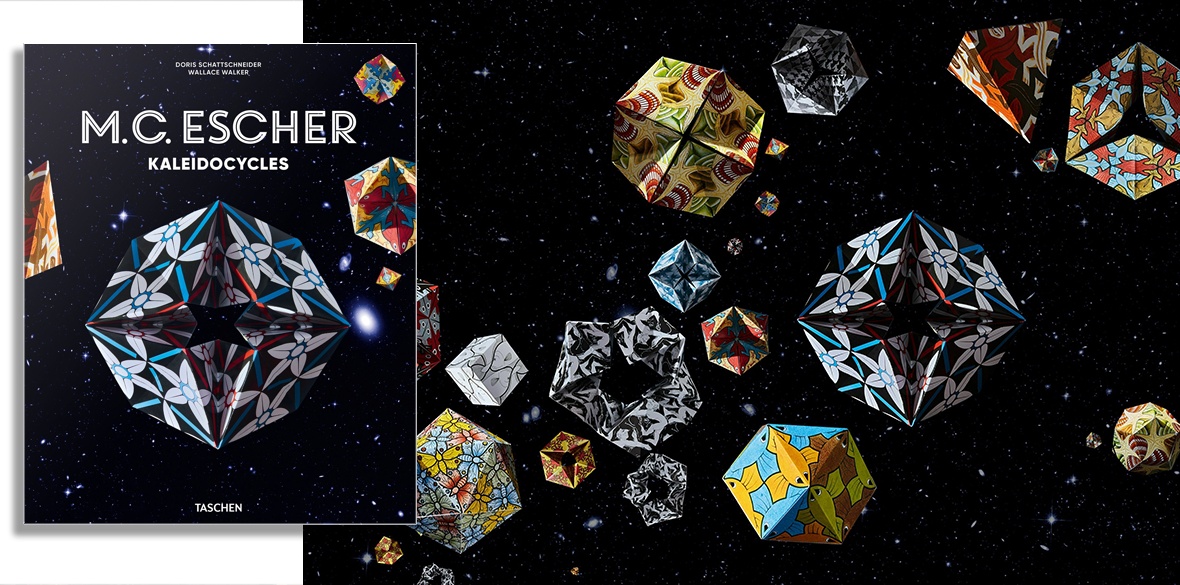This is the last article you can read this month
You can read more article this month
You can read more articles this month
Sorry your limit is up for this month
Reset on:
Please help support the Morning Star by subscribing here
MC Escher: Kaleidocycles
Doris Schattschneider and Wallace Walker
Taschen £34.15
IF DOOMSCROLLING has become a bad habit in an era when the pandemic and war force your nervous fingers to obsessively seek out breaking news of the apocalypse, then Kaleidocycles is the perfect antidote.
It is a tailor-made diversion for stressful times that requires you to turn off your screen and use your hands more creatively in order to assemble intriguing card patterns inspired by the work of MC Escher.
The Dutch graphic artist most popularly known for his gravity-defying staircases in works such as Relativity (1953) and Convex and Concave (1955) is today celebrated as much for his intuitive mathematical genius as his originality.
That is why he was described by his friend, the art historian Albert Flocon, as a “thinking artist” whose technique was based on the application of accurate, rule-based geometric relationships in the portrayal of shapes, figures and space.
It is under-appreciated that among Escher’s many sources of inspiration, a recurrent and dominant influence was the Islamic architecture and mosaic decorations of Moorish Spain.
During the 1930s, he visited the Alhambra palace and Mezquita mosque/cathedral in Andalusia, and his sketches formed the basis of subsequent work exploring the possibilities of tessellation—tiling—using strict grids.
It should come as no surprise, then, that the collaborators in Kaleidocycles were a design artist, the late Wallace Walker — who coined the term in the 1950s from the Greek kalos (beautiful), eidos (form), and kyklos (ring) — and Doris Schattschneider, a professor emeritus of Mathematics. This edition by Taschen is based on their classic work first published in 1977.
Together, the set comprises an introduction to Escher’s fascinating oeuvre and 17 mind-bending, ready-to-assemble, kaleidoscopically designed card patterns.
Kaleidocycles are three-dimensional rings made from chains of tetrahedra which, when the ends are brought together to form a closed circle, can then be turned through their centre in a continuous motion, seeming to bloom like flowers when rotated.
Doing so is deeply satisfying — a tactile source of pleasure that sends a tingle down the neck and is just as addictive as using a smartphone.
But there is method to this madness — the authors were both noted scholars of this phenomenon by which a two-dimensional (flat) grid can be assembled into a kinetic, three-dimensional form. Their choice of kaleidocycles captures two of Escher’s dominant themes — a closed cycle and endless movement. The result is captivating.
If you want to take your mind off Armageddon but just cannot find a way to do so, turn to Escher. He was more than an artist — he was a graphic craftsman who constructed a refuge for an over-active imagination.









